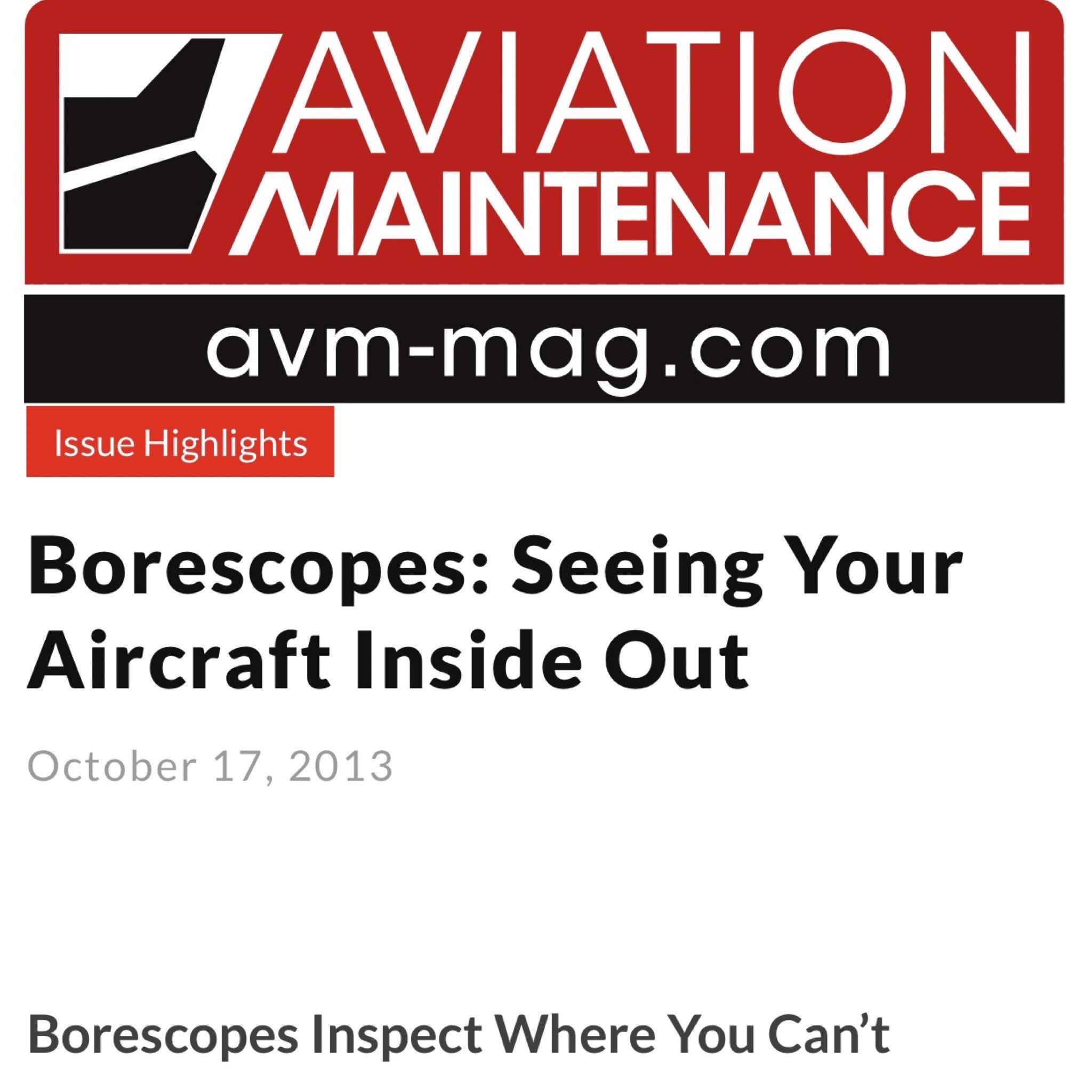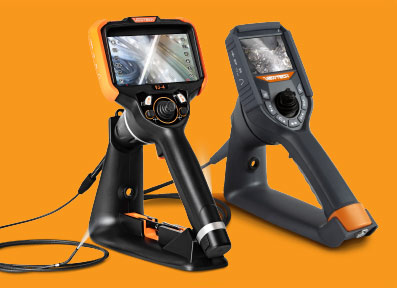Articles Written for Industry Publications

Aviation Maintenance Magazine
Borescopes: Seeing Your Aircraft Inside Out
Borescopes Inspect Where You Can’t
by ViewTech Borescopes | RF System Lab
With our extensive knowledge, ViewTech | Rf System Lab discussed how borescopes help your aviation maintenance inspections, seeing where you can’t, with Aviation Maintenance Magazine.
To read the full article on Aviation Maintenance Magazines website, please go here, view the PDF version here or read the text version below…
October 17, 2013
ViewTech Borescopes | RF System Lab
Borescopes Inspect Where You Can’t
“Critical in supporting safe operation and quality control of turbines and other aircraft body parts, this nondestructive testing tool enables the detection and evaluation of defects or imperfections in materials or structural properties, without disassembling or producing harmful effects on the subjects being tested,” says Melissa Stancato, product manager, Aerospace at GE Measurement & Control, a business division of GE Oil & Gas, Skaneateles, N.Y. “GE’s borescopes are used thousands of times a week globally to ensure readiness of commercial and military aircraft.”
A Small Access Hole
A borescope can be used on almost any piece of mechanical aviation equipment that has a small access hole. “Applications include inspecting airframes, flap tracks, wiring harnesses and combustion chambers on recip engines,” says Sean O’Connor, general manager, RF System Lab., Traverse City, Mich. “Additionally, borescopes are used in corrosion inspections.”
One of the most common uses of borescopes in aviation is inspecting turbine engines. “A borescope’s function is to go inside and look at the engine turbine blades to see cracks, discoloration, burring marks and indentations on a blade that can cause problems,” says Jitu Patel, V.P. Industrial Division, Machida Inc., Orangeburg, N.Y. “Place the borescope in the engine and rotate the turbine so you can see the blades one by one.”
Frank Lafleur, product manager of remote visual inspection Americas at Olympus NDT, in Houston says other borescope-inspected aviation parts can include anything from first-stage compressor blades or stators, combustion liners, injector nozzles and HPT sections. “This inspection looks for wear, damage or abnormalities to ensure the engine is safe to fly,” he says. “Each engine has a set of safe conditions for chips, dents, scratches or even cracks. The most advanced borescopes can quantify these faults through measurement, to ensure tolerances from the engine manufacturers are followed precisely.”
A borescope can inspect just about anywhere there’s an access hole large enough to accept its diameter. With the use of guides or different lengths, engines, structure, or anything else that needs visual inspection can be quickly viewed. There are locations on an aircraft that can more easily be inspected with other visual methods. Also, there are considerations to be made when dealing with fuel lines or tanks as many modern borescopes have electric components at the end of the scope, which naturally could cause a spark.
“Special care should be taken when using a borescope to inspect fuel tanks, with proper grounding being very important,” says O’Connor. “Aside from fuel tanks, as long as the scope is liquid proof and resistant to the common fluids found in various aircraft systems, a borescope can safely be used anywhere.”
Lafleur believes that each manufacturer or service center needs to educate themselves on the limitations of any borescope to ensure safe operation. “This is important for the safety of the technician of course, but also for the equipment,” he says. “These tools are a capital investment. Avoid insertion into a hot engine which could destroy the scope. Some may even have limitations on oil or water contact.”
Request a Free Demo Unit
Check the box in the form below and one of our representatives will arrange a free demo unit.
Call Us at 231-943-1171
– Or –
Fill out the form below and one of our representatives will contact you.










